The Connection Between Anxiety, Insomnia, and Poor Sleep
Understanding the relationship between anxiety and sleep problems is the first step toward finding effective solutions. When stress and worry take hold, they trigger a cascade of physiological responses that directly interfere with your ability to fall and stay asleep.
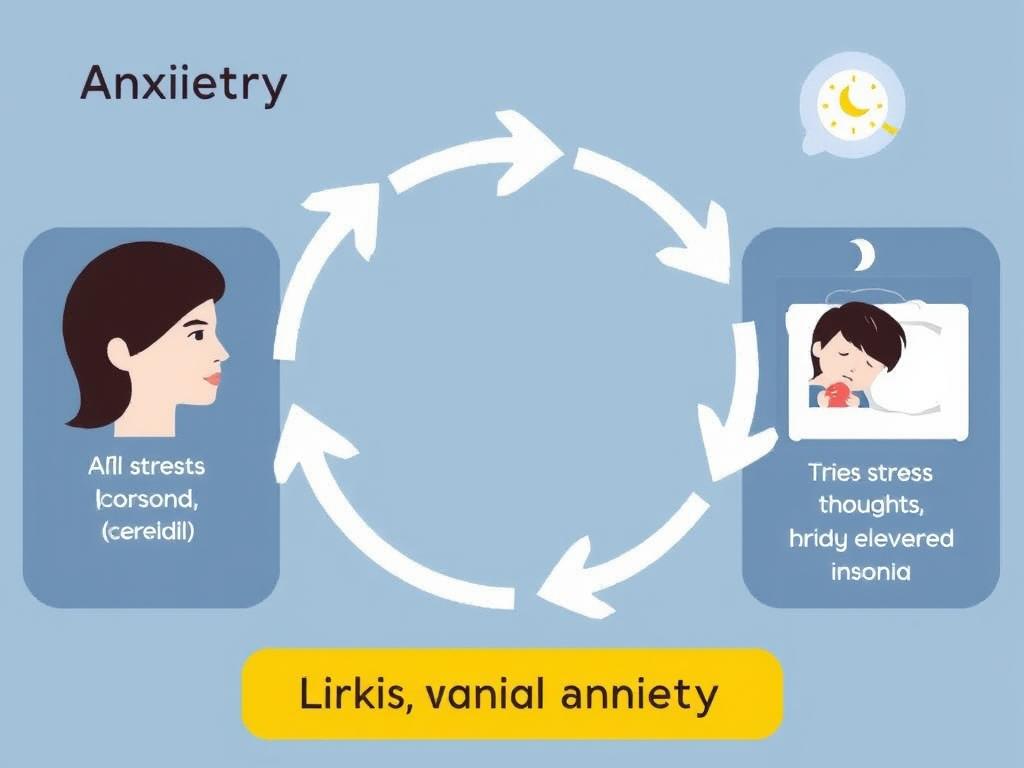
How Anxiety Disrupts Sleep
Anxiety causes racing thoughts that make quieting your mind nearly impossible. When you’re anxious, your body releases stress hormones like cortisol and adrenaline, which boost alertness and prepare your body for “fight or flight” – exactly the opposite of what you need for sleep.
This heightened state leads to common insomnia symptoms:
- Difficulty falling asleep despite feeling tired
- Waking frequently throughout the night
- Early morning awakening
- Feeling unrested even after a full night’s sleep
The Bidirectional Relationship
Sleep and anxiety exist in a bidirectional relationship – poor sleep increases anxiety, and anxiety worsens sleep. Breaking this cycle requires addressing both sides of the equation through effective relaxation techniques.
Ready to Break the Cycle?
The techniques in this guide can help you manage anxiety and improve sleep quality. Start implementing them tonight.
8 Science-Backed Relaxation Techniques for Better Sleep
These proven methods can help you calm your mind, relax your body, and prepare for restful sleep. Each technique addresses different aspects of relaxation, so you can find what works best for your unique needs.
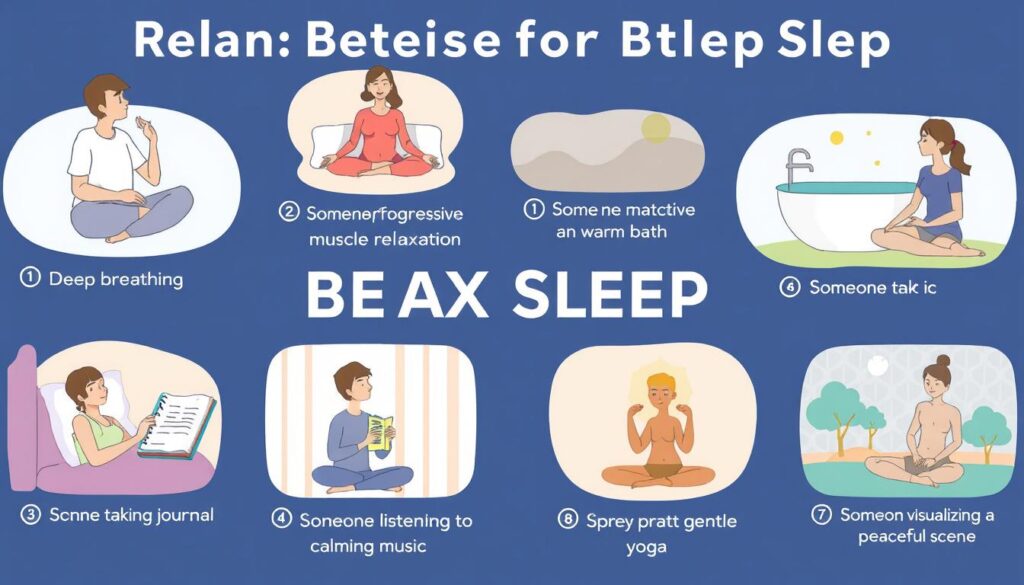
1. The 4-7-8 Breathing Technique
Developed by Dr. Andrew Weil, this breathing method acts as a natural tranquilizer for the nervous system. It’s based on pranayama breathing exercises from yoga and helps reduce anxiety while preparing your body for sleep.
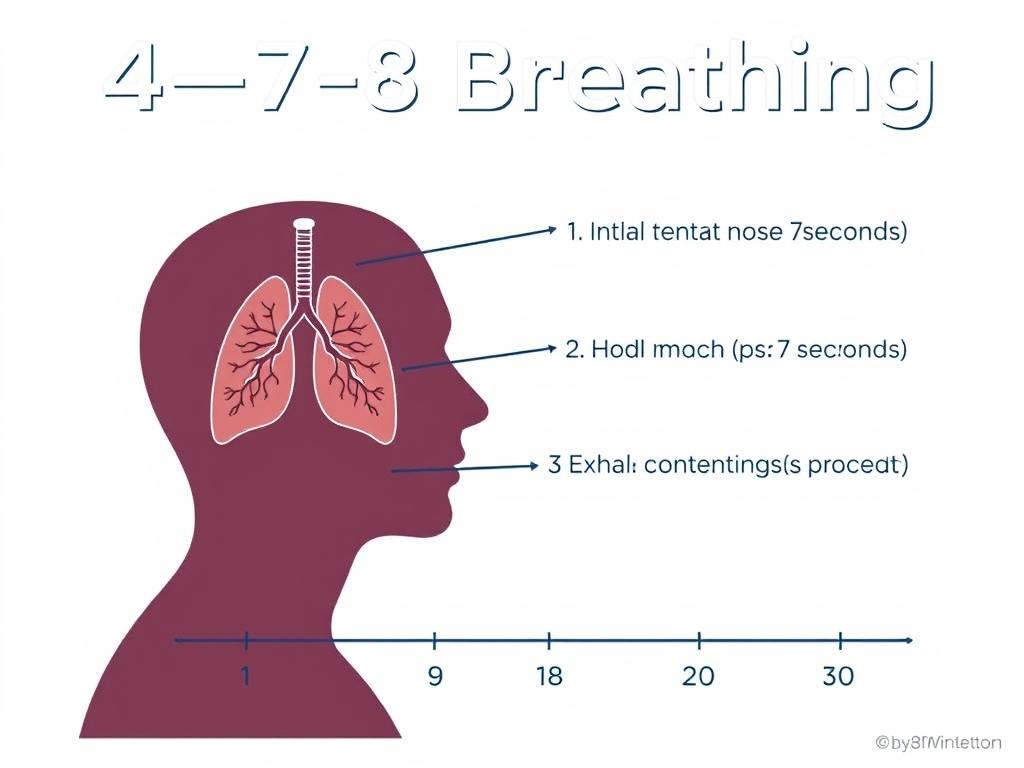
How to Practice 4-7-8 Breathing:
- Sit or lie in a comfortable position
- Place the tip of your tongue against the ridge behind your upper front teeth
- Exhale completely through your mouth, making a whoosh sound
- Close your mouth and inhale quietly through your nose for 4 seconds
- Hold your breath for 7 seconds
- Exhale completely through your mouth for 8 seconds, making a whoosh sound
- Repeat the cycle 3-4 times
Try this technique tonight before bed to experience its calming effects.
2. Progressive Muscle Relaxation (PMR)
PMR helps release physical tension that often accompanies anxiety. By systematically tensing and relaxing muscle groups, you become more aware of bodily sensations and can effectively release stored tension.
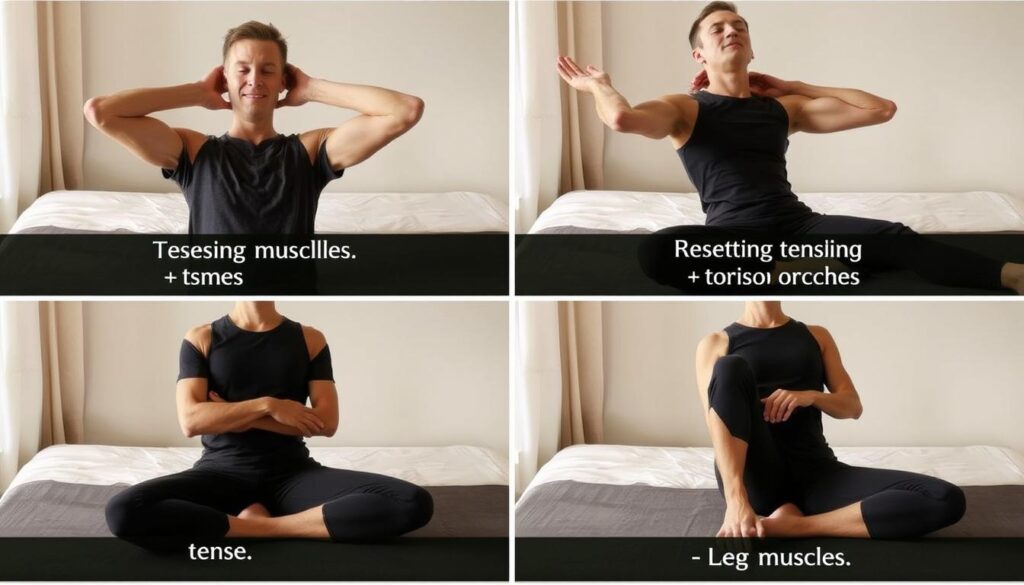
How to Practice Progressive Muscle Relaxation:
- Lie down in a comfortable position
- Begin with your feet – tense the muscles for 5 seconds, then relax for 10 seconds
- Work your way up through each muscle group: calves, thighs, abdomen, chest, arms, hands, neck, and face
- Focus on the contrast between tension and relaxation
- Take slow, deep breaths throughout the exercise
“Progressive muscle relaxation reduced my sleep onset time from over an hour to just 15 minutes. I was skeptical at first, but after a week of consistent practice, I noticed a significant difference in how quickly I could fall asleep.”
3. Guided Imagery
Guided imagery harnesses the power of your imagination to induce relaxation. When you imagine a peaceful scene in detail, your body responds as though you’re actually experiencing it, triggering the relaxation response.
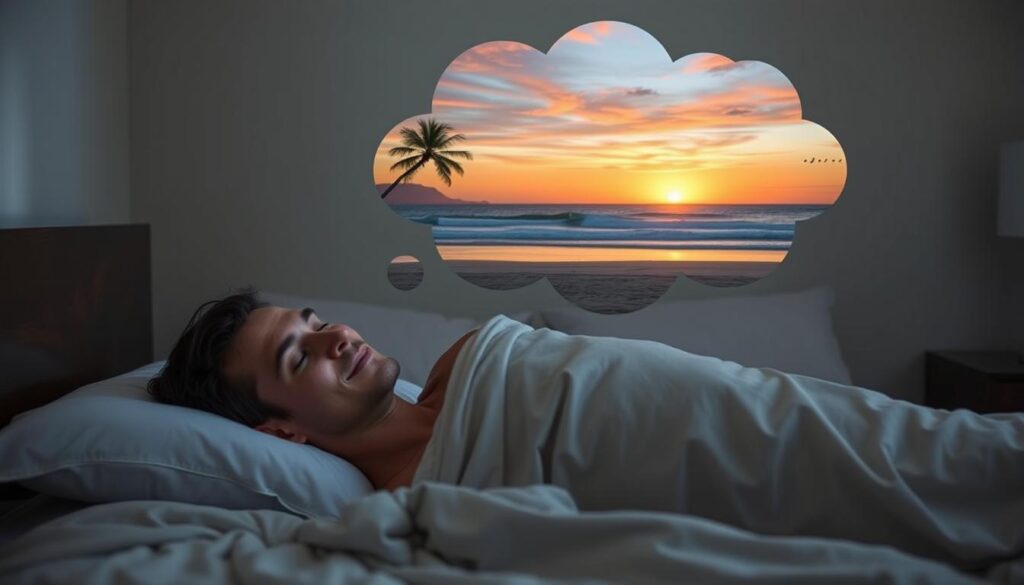
How to Practice Guided Imagery:
- Lie in a comfortable position and close your eyes
- Take several deep breaths to begin relaxing
- Imagine a peaceful, safe place (beach, forest, mountain, etc.)
- Engage all your senses – what do you see, hear, smell, feel, and taste?
- Immerse yourself in the scene for 10-15 minutes
- When ready, slowly return your awareness to your body and surroundings
Experience a guided imagery session designed specifically for sleep.
4. Mindfulness Meditation
Mindfulness meditation helps quiet racing thoughts by focusing your attention on the present moment. Research shows it can significantly improve sleep quality for people with chronic insomnia.
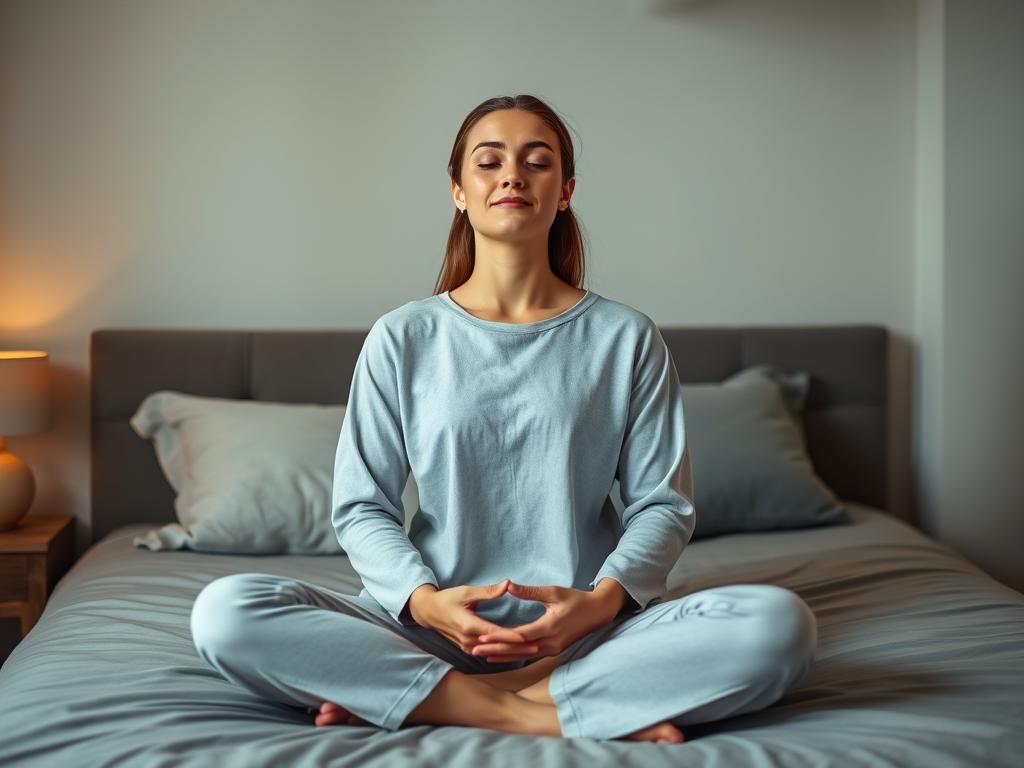
How to Practice Mindfulness Meditation:
- Sit or lie in a comfortable position
- Close your eyes and focus on your natural breathing
- Notice the sensation of breath entering and leaving your body
- When your mind wanders (which is normal), gently return focus to your breath
- Start with 5 minutes and gradually increase to 15-20 minutes
Research Insight: A study published in JAMA Internal Medicine found that mindfulness meditation improved sleep quality in older adults with sleep disturbances more effectively than traditional sleep education.
5. Autogenic Training
Autogenic training is a powerful yet underutilized relaxation technique that uses self-suggestions to induce a state of deep relaxation. It focuses on creating sensations of warmth and heaviness throughout the body.
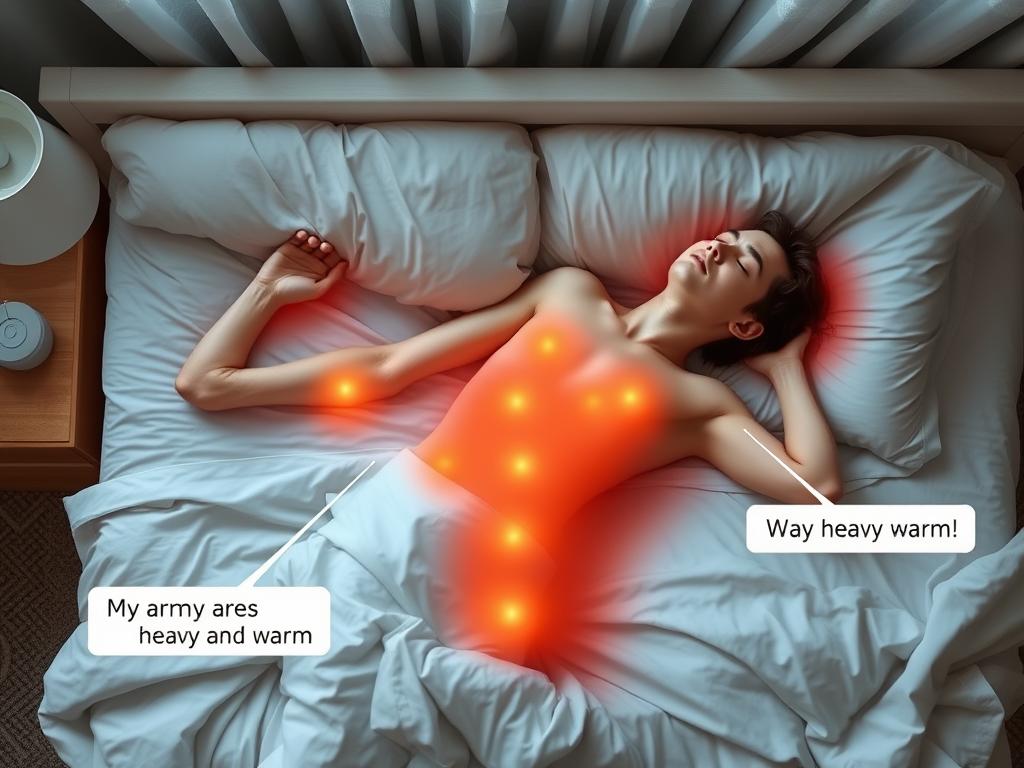
How to Practice Autogenic Training:
- Lie down in a comfortable position
- Take several deep breaths to begin relaxing
- Repeat simple phrases focusing on heaviness and warmth: “My right arm is heavy and warm”
- Work through each body part systematically
- Add phrases about calm breathing and heartbeat
- End with focus on the cooling sensation of the forehead
6. Warm Bath or Shower Ritual
Taking a warm bath or shower 1-2 hours before bedtime helps trigger your body’s natural temperature regulation system, which plays a key role in sleep onset.

How to Create an Effective Bath Ritual:
- Schedule your bath 1-2 hours before your intended bedtime
- Set the water temperature between 104-109°F (40-43°C)
- Add sleep-promoting elements like lavender essential oil or Epsom salts
- Dim the lights and remove distractions
- Soak for 20-30 minutes
- Move to a cool bedroom afterward to enhance the temperature drop
Science Fact: Research shows that the drop in body temperature after a warm bath signals to your brain that it’s time to sleep, helping you fall asleep faster and enjoy deeper sleep.
7. Gentle Yoga for Sleep
Specific yoga poses can activate the parasympathetic nervous system (rest and digest), counteracting the stress response and preparing your body for sleep.
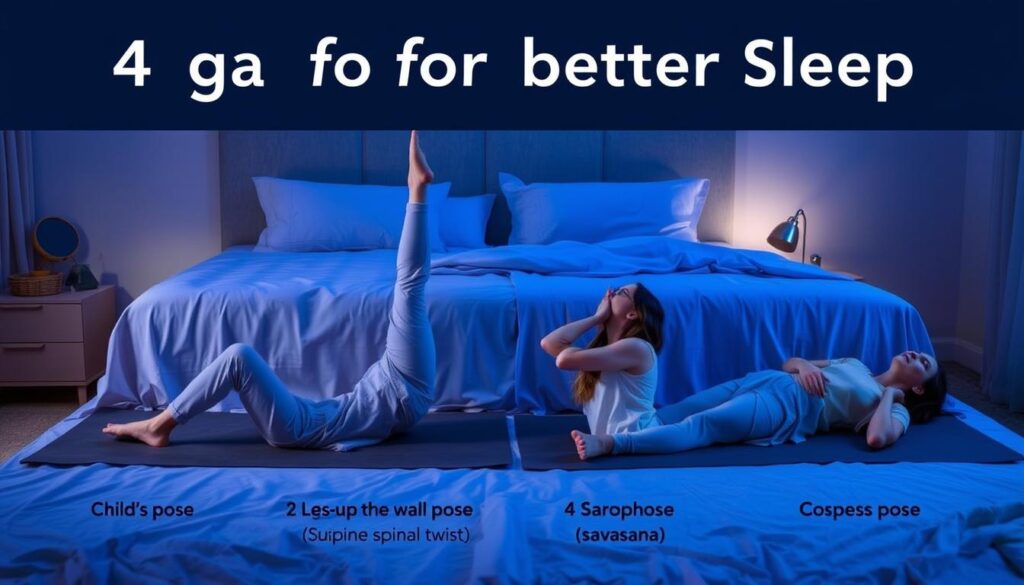
Recommended Bedtime Yoga Sequence:
- Child’s Pose – Kneel and extend arms forward, resting forehead on mat (1-2 minutes)
- Legs-Up-The-Wall – Lie with buttocks near wall and legs extended up (3-5 minutes)
- Supine Spinal Twist – Lie on back, bring knees to chest, then lower to one side (1 minute each side)
- Corpse Pose – Lie flat on back with arms at sides, completely relaxed (5 minutes)
Follow along with our bedtime yoga sequence designed for better sleep.
8. Sleep-Focused Journaling
Writing down worries and to-do lists before bed can help clear your mind of racing thoughts that often delay sleep onset.
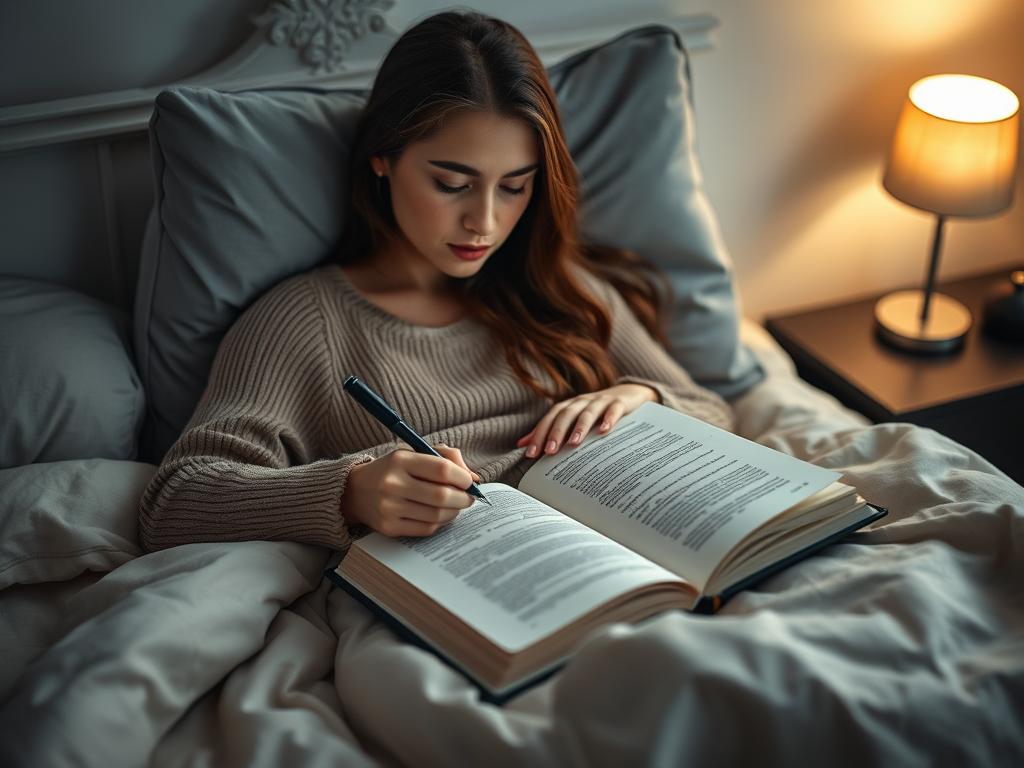
Effective Sleep Journaling Techniques:
- Set aside 15 minutes before your bedtime routine
- Write down any worries or persistent thoughts
- Create tomorrow’s to-do list to prevent planning during sleep time
- Note 3 things you’re grateful for from the day
- Close the journal, symbolically setting aside concerns until morning
“Sleep journaling changed everything for me. Getting those swirling thoughts out of my head and onto paper gave my mind permission to rest. My anxiety decreased dramatically within just two weeks.”
When and How to Implement These Techniques
The timing and environment for practicing relaxation techniques can significantly impact their effectiveness. Here’s how to optimize your approach:
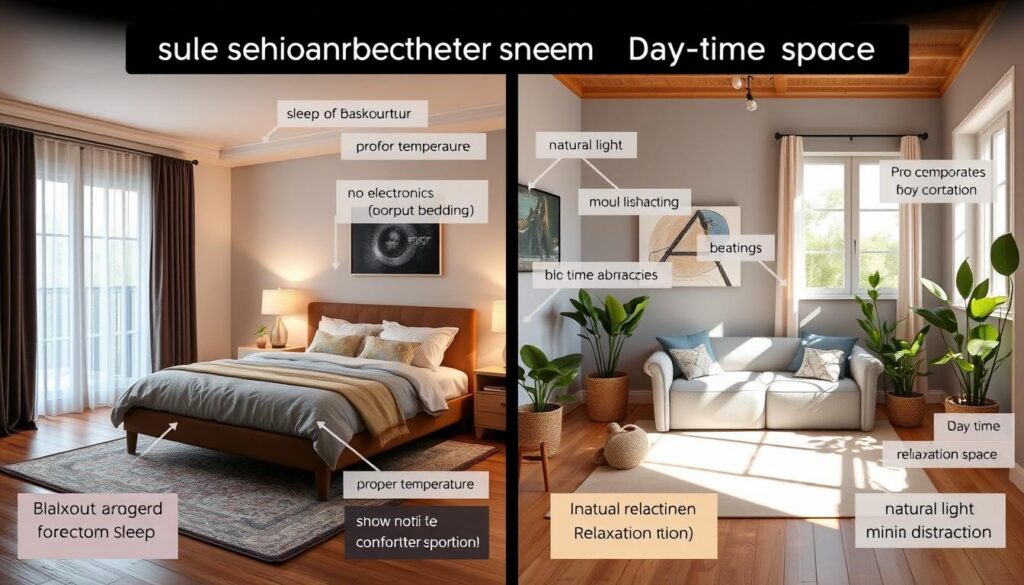
Creating the Optimal Environment
Physical Space
- Temperature: Keep your bedroom between 65-68°F (18-20°C)
- Lighting: Dim lights 1-2 hours before bed to signal sleep time
- Sound: Minimize noise or use white noise if needed
- Comfort: Ensure your mattress and pillows support good sleep posture
- Electronics: Remove or power down devices that emit blue light
Timing Considerations
- Consistency: Practice techniques at the same time each day
- Buffer Zone: Allow 30-60 minutes between relaxation and sleep
- Avoid Pressure: Don’t watch the clock or force relaxation
- Daytime Practice: Some techniques are more effective when practiced regularly during the day
- Meal Timing: Allow 2-3 hours between your last meal and bedtime
Sample Evening Routine Timeline
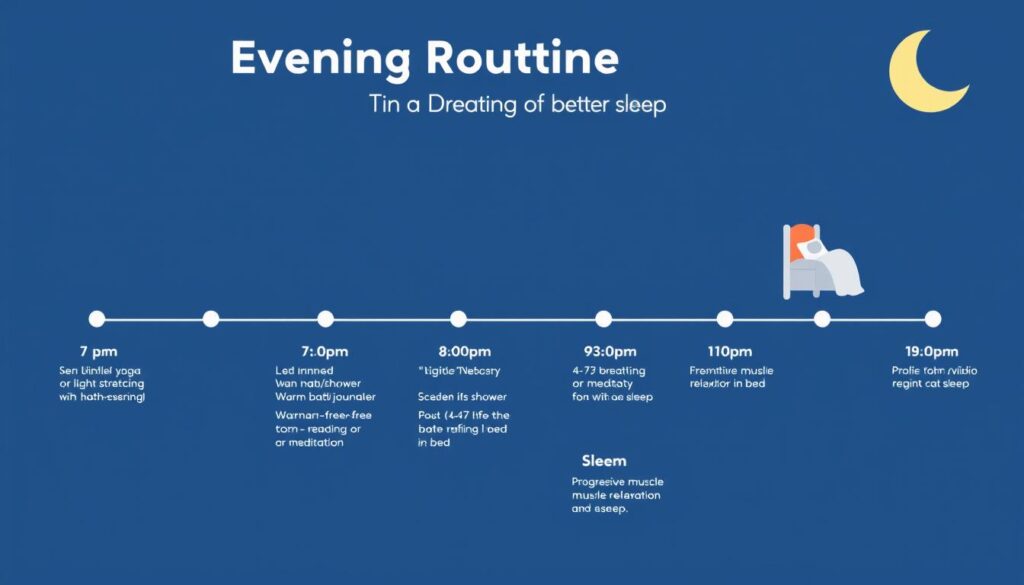
| Time | Activity | Purpose | Duration |
| 2 Hours Before Bed | Warm Bath/Shower | Trigger temperature regulation for sleep | 20-30 minutes |
| 1 Hour Before Bed | Sleep Journaling | Clear mind of worries and to-dos | 10-15 minutes |
| 45 Minutes Before Bed | Gentle Yoga | Release physical tension | 15-20 minutes |
| 20 Minutes Before Bed | Mindfulness Meditation | Quiet mental chatter | 10-15 minutes |
| In Bed | 4-7-8 Breathing or Progressive Muscle Relaxation | Final relaxation to induce sleep | 5-10 minutes |
Pro Tip: Don’t try all techniques at once. Start with one that appeals to you most, practice it consistently for a week, then evaluate its effectiveness before adding another.
Real-Life Success Stories
These case studies demonstrate how consistent practice of relaxation techniques has helped real people overcome sleep challenges.

Emma’s Story: Overcoming Chronic Insomnia
“After struggling with insomnia for over 5 years and trying numerous medications, I was skeptical about relaxation techniques. I started with the 4-7-8 breathing method and committed to practicing it every night for two weeks.
By the end of the first week, my sleep onset time had decreased from 90+ minutes to about 30 minutes. After a month of adding progressive muscle relaxation, I was falling asleep within 15 minutes most nights.”
Key techniques: 4-7-8 Breathing, Progressive Muscle Relaxation

David’s Story: Managing Anxiety-Induced Sleep Problems
“My work-related anxiety was causing racing thoughts at bedtime. I’d lie awake for hours replaying conversations and worrying about upcoming projects.
Sleep journaling became my lifeline. Writing down my worries and next day’s tasks gave my brain permission to rest. Adding guided imagery helped me redirect my thoughts to peaceful scenarios instead of work concerns.”
Key techniques: Sleep Journaling, Guided Imagery

Maria’s Story: Improving Sleep Quality After Menopause
“Menopause wreaked havoc on my sleep. Hot flashes would wake me, and then anxiety about not sleeping would keep me awake for hours.
I created a comprehensive approach: evening yoga, followed by a lukewarm shower, and autogenic training in bed. The combination helped regulate my body temperature and calm my mind. I’m now sleeping 6-7 hours most nights, compared to 3-4 hours before.”
Key techniques: Gentle Yoga, Autogenic Training
“The most important factor in my success was consistency. Relaxation techniques aren’t magic pills—they’re skills that improve with practice. Commit to daily practice for at least two weeks before evaluating effectiveness.”
Your Customizable 7-Day Relaxation Plan
This structured plan introduces one new technique each day while building on previous practices. By the end of the week, you’ll have experienced all major relaxation methods and can identify which work best for you.
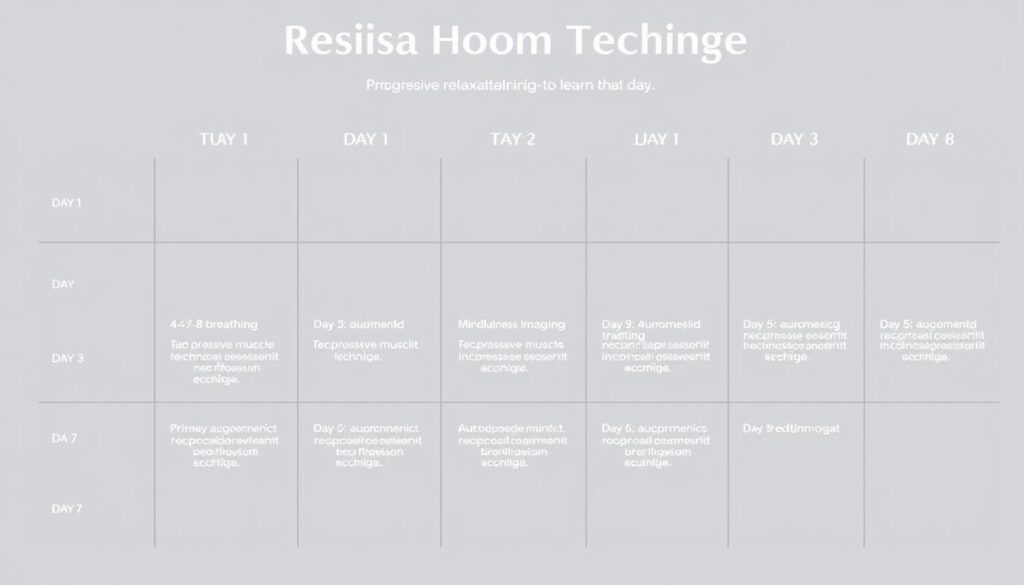
| Day | Primary Technique | Secondary Practice | Evening Routine |
| Day 1 | 4-7-8 Breathing (5 minutes) | Sleep environment optimization | Dim lights 1 hour before bed |
| Day 2 | Progressive Muscle Relaxation (10 minutes) | Continue 4-7-8 Breathing | No screens 30 minutes before bed |
| Day 3 | Guided Imagery (10 minutes) | Brief PMR session | Warm shower 1 hour before bed |
| Day 4 | Mindfulness Meditation (5 minutes) | Sleep Journaling | Herbal tea 45 minutes before bed |
| Day 5 | Autogenic Training (10 minutes) | Choose favorite technique so far | Gentle stretching before techniques |
| Day 6 | Bedtime Yoga Sequence (15 minutes) | Brief breathing practice | Complete electronics shutdown |
| Day 7 | Create personal combination | Reflect on most effective techniques | Implement full routine with favorite methods |
Important: If you experience persistent insomnia despite trying these techniques consistently for 2-3 weeks, consult a healthcare provider. Chronic insomnia may indicate an underlying condition requiring medical attention.
Get Your Personalized 7-Day Relaxation Plan
Download our comprehensive guide with detailed instructions for each technique, tracking sheets, and additional resources to support your journey to better sleep.
Frequently Asked Questions
How long does it take for relaxation techniques to improve sleep?
Most people notice some improvement within 1-2 weeks of consistent practice. However, significant and lasting results typically require 3-4 weeks of regular use. Think of relaxation techniques as skills that improve with practice rather than immediate solutions.
Can I practice these techniques if I’m taking sleep medication?
Yes, these techniques can complement medication. However, always consult your healthcare provider before making changes to your sleep regimen. Some people find they can gradually reduce medication as relaxation skills improve, but this should only be done under medical supervision.
What if I fall asleep during the relaxation practice?
That’s perfectly fine! If you’re practicing in bed with the intention of sleeping, falling asleep during the technique means it’s working effectively. If you’re practicing during the day for stress management, try sitting upright rather than lying down to stay alert.
How do I know which technique is best for me?
Different techniques work better for different people. The 7-day plan allows you to experience each method and identify what feels most effective. Many people find a combination of 2-3 techniques works better than relying on just one. Keep a sleep journal to track which methods correlate with better sleep.
When should I see a doctor about my sleep problems?
Consult a healthcare provider if:
- You’ve consistently practiced relaxation techniques for 3-4 weeks without improvement
- Your sleep problems significantly impact your daily functioning
- You experience symptoms like loud snoring, gasping for air, or extreme daytime sleepiness
- You have concerns about your sleep medications or their side effects
Conclusion: Your Path to Better Sleep Starts Tonight
Relaxation techniques offer a natural, effective approach to managing insomnia and anxiety while improving sleep quality. The connection between your mind and body is powerful—by learning to activate your relaxation response, you can counteract the stress and tension that interfere with restful sleep.
Remember that consistency is key. These techniques become more effective with regular practice, as your body learns to recognize and respond to the signals for relaxation. Be patient with yourself and approach this journey with curiosity rather than pressure.
Start tonight with just one technique that resonates with you. Add others gradually as you build your personal relaxation toolkit. With time and practice, you can break the cycle of anxiety and insomnia, reclaiming the restful, rejuvenating sleep you deserve.
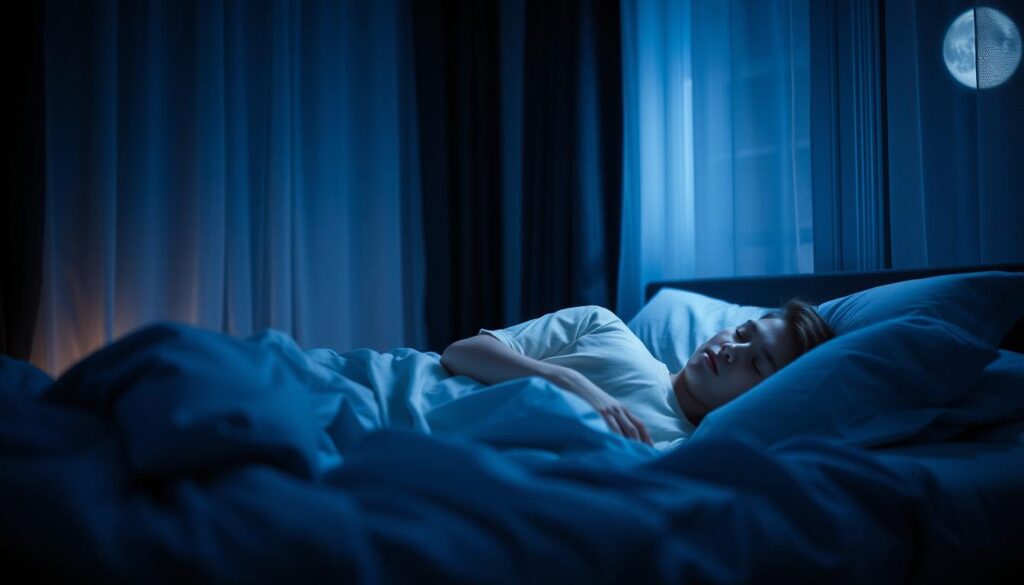
Ready to Transform Your Sleep?
Download our comprehensive 7-Day Relaxation Plan with detailed instructions, tracking tools, and bonus resources to support your journey to better sleep.

